Start-ups for wing-based eVTOL
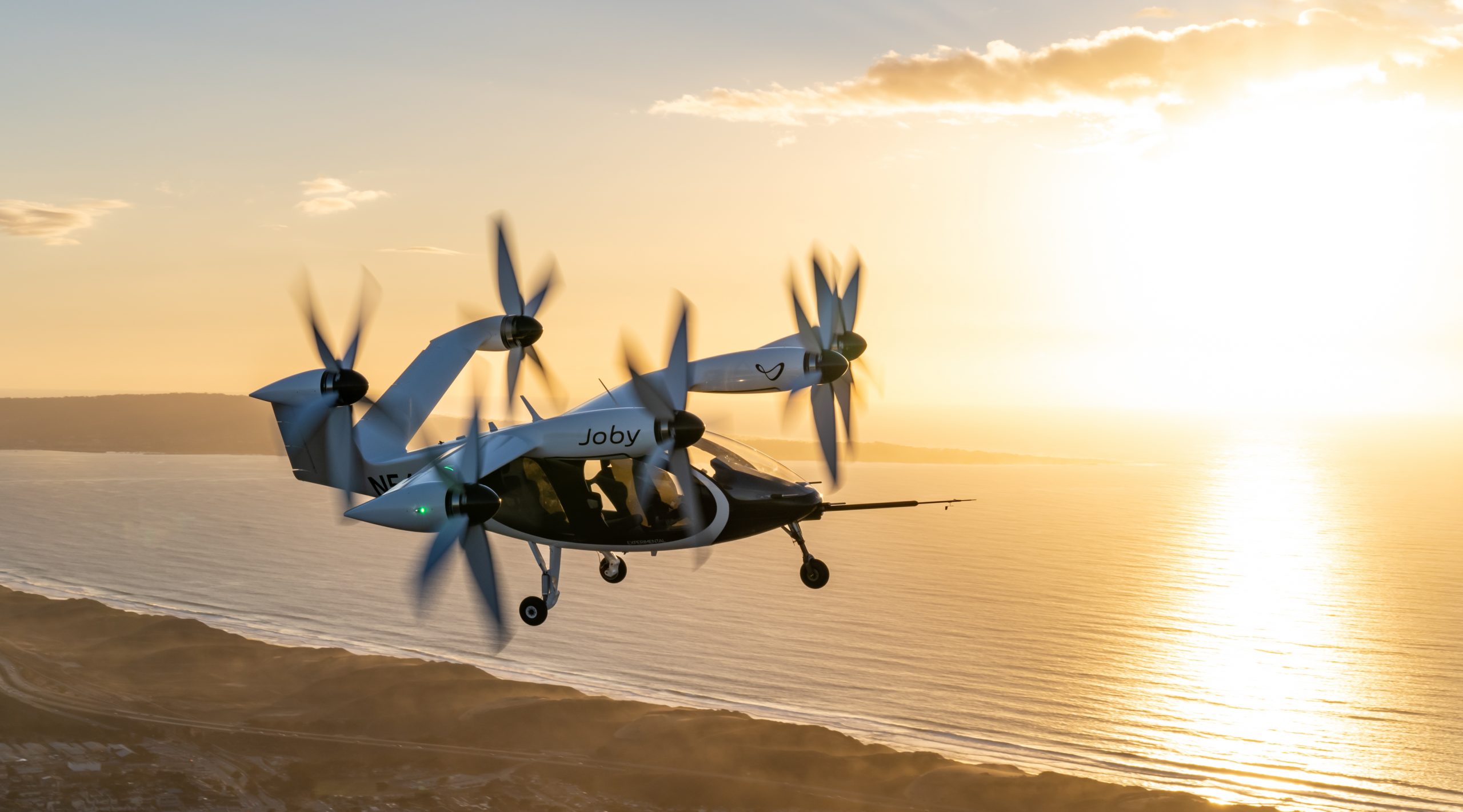
Wing-based eVTOL from Joby Aviation
(Mit freundlicher Genehmigung/Courtesy of Joby Aviation. (c) [Media Kit])
Management Summary
Wing-based eVTOL, unlike mulitcopters, have wings that generate lift in forward flight and thus keep the aircraft in the air. The technology of wing-based eVTOL thus differs significantly from multicopters, in which vertical propellers provide lift.
Most wing-based eVTOL are developed for commercial flights with a capacity of 4-6 passengers (plus pilot). However, there are also start-ups developing smaller aircraft for private customers for 1-2 passengers.
Wing-based eVTOL can be realized with 4 different propeller configurations, depending on the chosen propeller variant the flight path differs during the so-called transition maneuver.
This maneuver describes the transition from vertical to horizontal flight after take-off, it must be mastered safely by all eVTOL aircraft. Of course, there is also a transition maneuver for landing, which is the transition from forward flight to vertical descent.
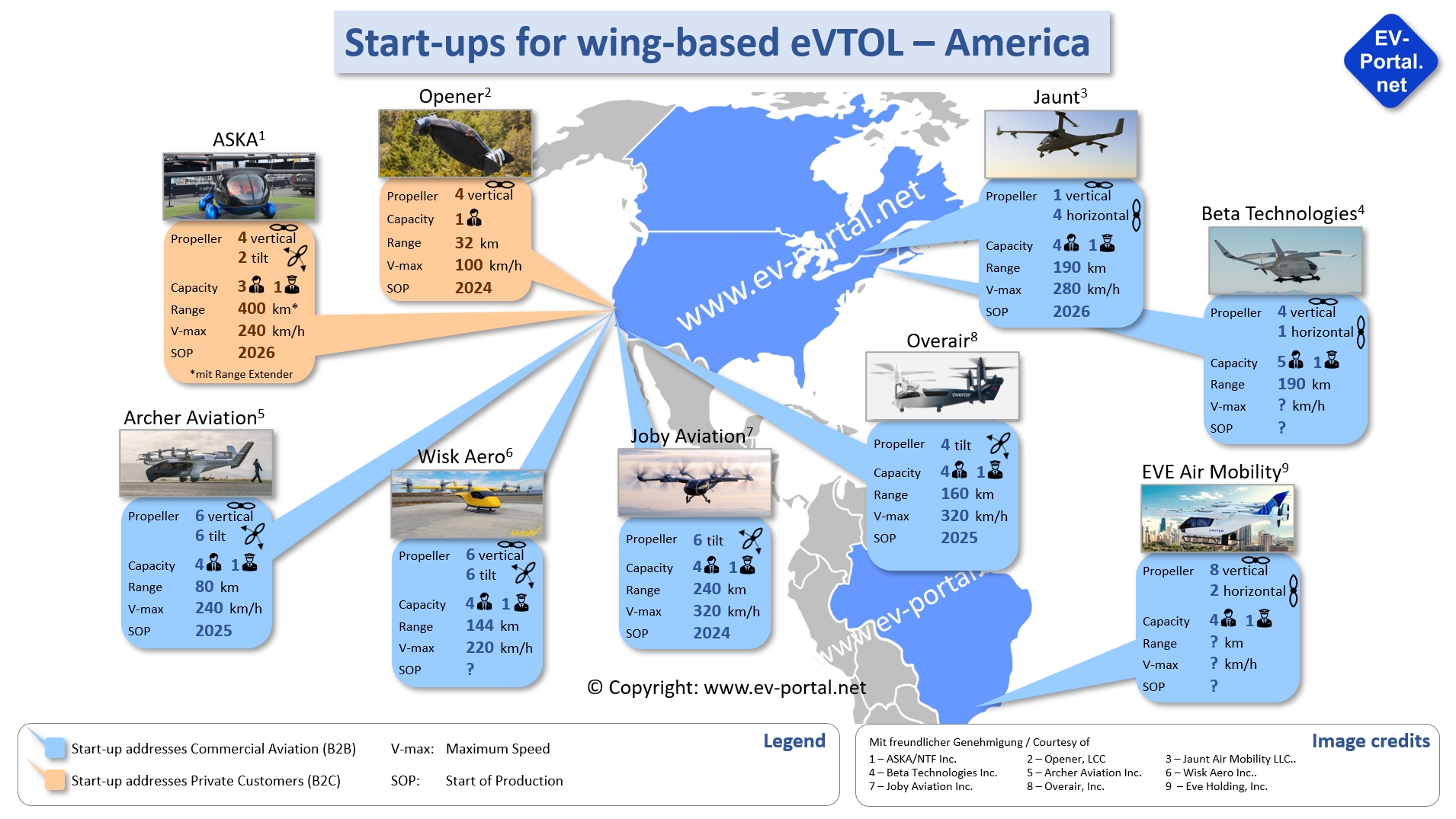
Fig. 1 – Overview Start-ups for wing-based eVTOL – America
Fig. 1 provides an overview of the best-known startups for wing-based eVTOL in the Americas, almost all of which are developing flight vehicles for commercial aviation.
U.S. companies Archer Aviation, Beta Technologies, and Joby Aviaton have been testing their flight-ready prototypes for some time. All 3 companies have entered into partnerships with large corporations, including well-known companies such as Stellantis (contract manufacturer for Archer), United Airlines (customer of Archer), UPS (customer of Beta), Delta Airlines (investor and customer of Joby) and Toyota (investment and technology partner of Joby).
U.S. startups Overair and Wisk Aero, as well as Canada’s Jaunt and Brazilian startup EVE Air Mobility, are still in the development phase, with first test flights not expected until 2023ff. Some of these “latecomers” also have very well-known partners; Wisk Aero is a subsidiary of Boeing and EVE Air Mobiliy of Embraer.
The U.S. start-up Opener addresses private customers and is developing a single-seater that has already been demonstrated several times at air shows in the United States.
A special feature is the flying car planned by ASKA, which can both drive on the road like a passenger car with 4 passengers and fly after unfolding the wings. Development and certification is planned from 2023 to 2025, with the first customer deliveries starting in 2026.
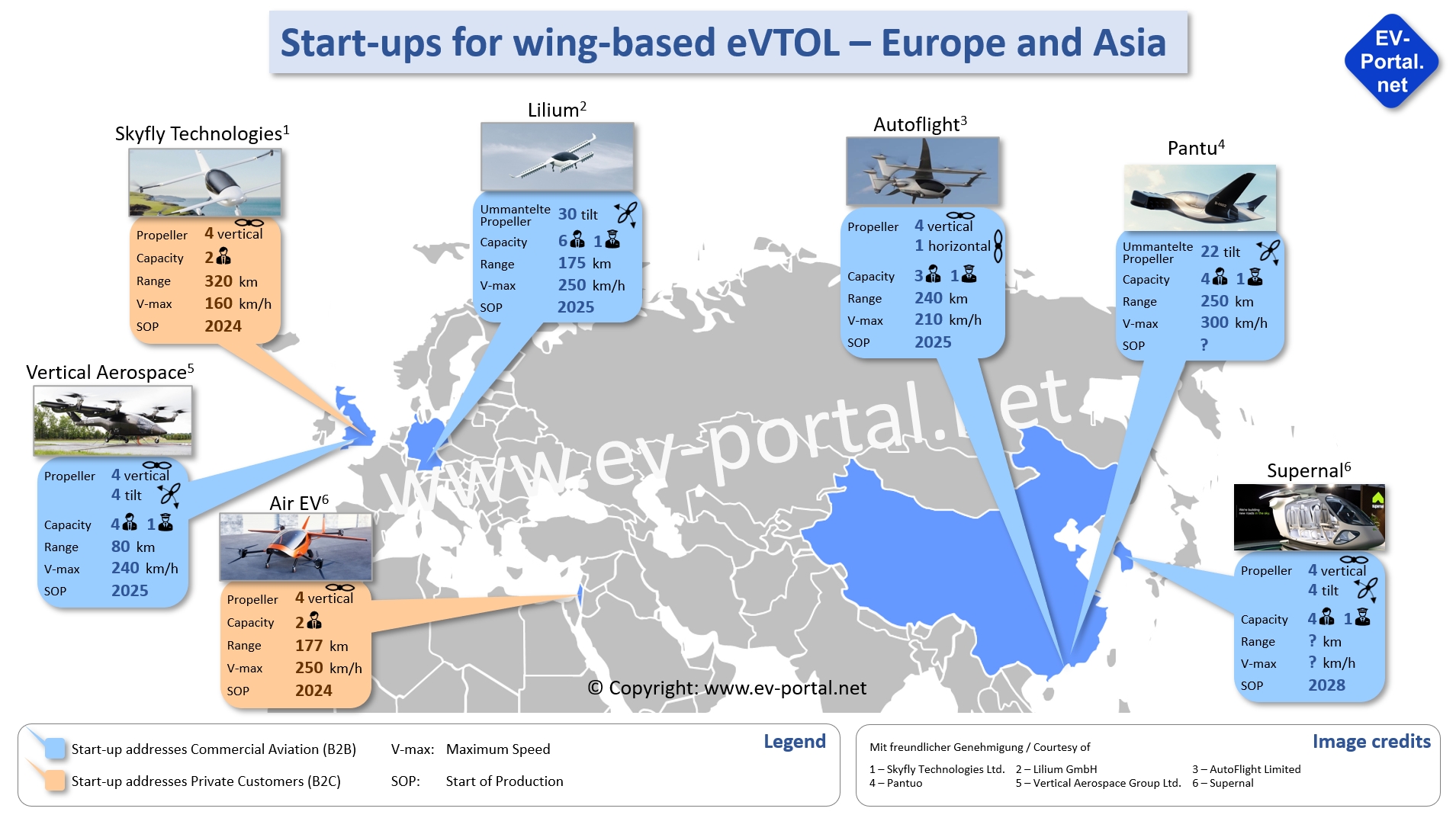
Fig. 2 – Overview Start-ups for wing-based eVTOL – Europe and Asia
Work is also being carried out on wing-based eVTOL in Europe and Asia, again mainly with commercial aviation as the target market.
The companies Lilium and Autoflight are already in the testing and certification phase with their flight-ready prototypes.
German startup Lilium also calls its model an eJet; it is the world’s only eVTOL with electric jet engines. Lilium has signed partnership agreements with a number of air service operators in Europe and Asia, with flight operations scheduled to begin in 2025.
Chinese startup Autoflight has established a subsidiary at Augsburg Airport to conduct flight tests in Germany. Autoflight is also scheduled to begin commercial flight operations in 2025.
Vertical Aerospace, Supernal and Pantuo are still working on flight-ready prototypes.
Among these 3 companies, the British company Vertical Aerospace is the most advanced, having been able to conduct flight tests with a scaled-down model in 2022.
The South Korean company Supernal has a very potent partner in Hyundai, but does not plan to bring its flying machine to market until 2028.
The Chinese start-up Pantuo is conspicuous in that all the news on its homepage is from 2021, so it can be assumed that this company has stopped work on its eVTOL model.
Sky Fly and Air EV address private customers, and both companies are developing small two-seat, wing-based eVTOL that are currently undergoing flight testing.
Both the British start-up Sky Fly and the Israeli start-up Air EV have already opened their homepages for pre-orders, with deliveries for both companies scheduled to begin in 2024.
Technology of wing-based eVTOL
The technology of wing vertical takeoffs is more complex than that of wingless vertical takeoffs (multicopters):
- Vertical propellers enable vertical takeoff and a vertical landing, similar to multicopters.
- Horizontal propellers provide propulsion and enable forward flight.
- During forward flight, the wings generate lift forces and keep the aircraft in the air.
Wing-based eVTOL have a significantly longer range than multicopters because the vertical propellers can be switched off during forward flight. The maximum range is essentially determined by the current technology of lithium-ion cells, in which significant progress can still be expected in the next few years.
However, wing-based eVTOLs are more limited in their maneuverability than multicopters and can only fly backwards or sideways to a very limited extent.
The propulsion system of wing-mounted vertical take-off aircraft is also basically designed with redundancy, i.e. the failure of one or more propellers does not lead to a crash because the remaining propellers still provide sufficient lift.
Propeller Configurations
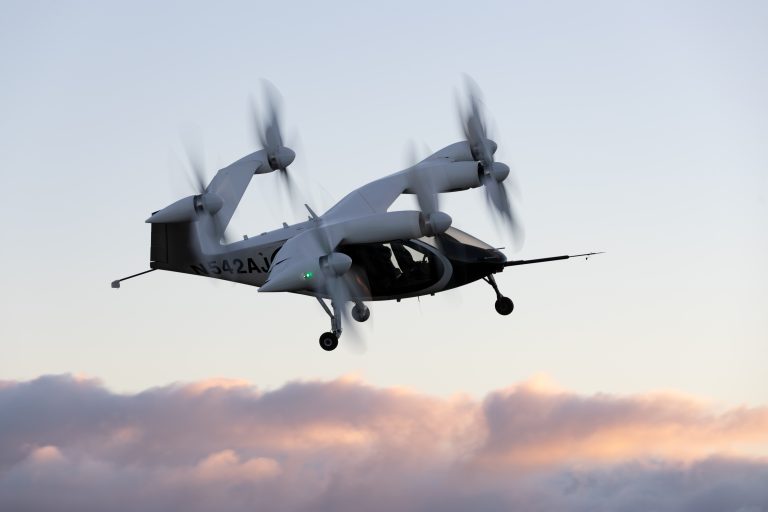
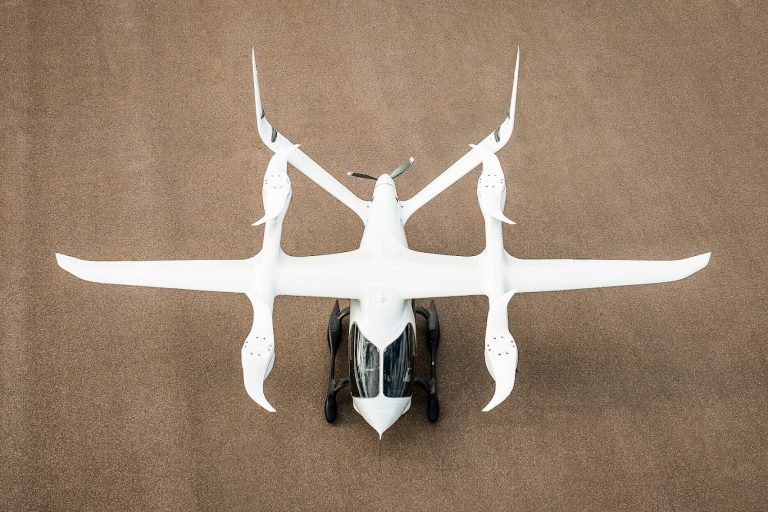
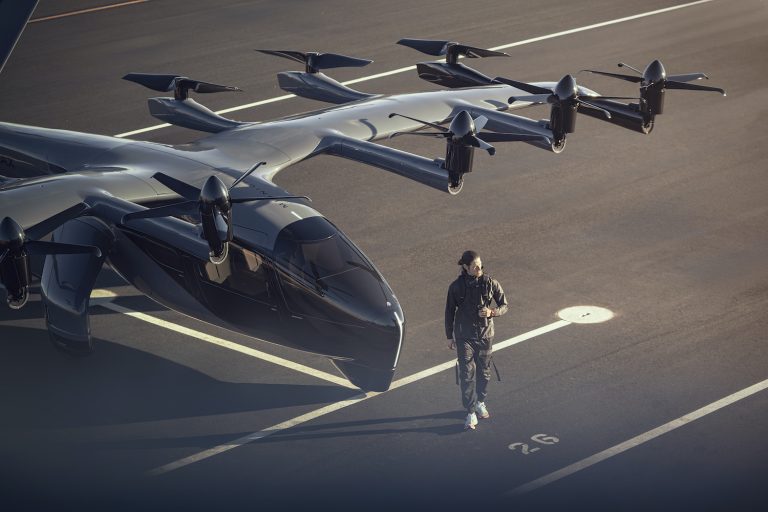
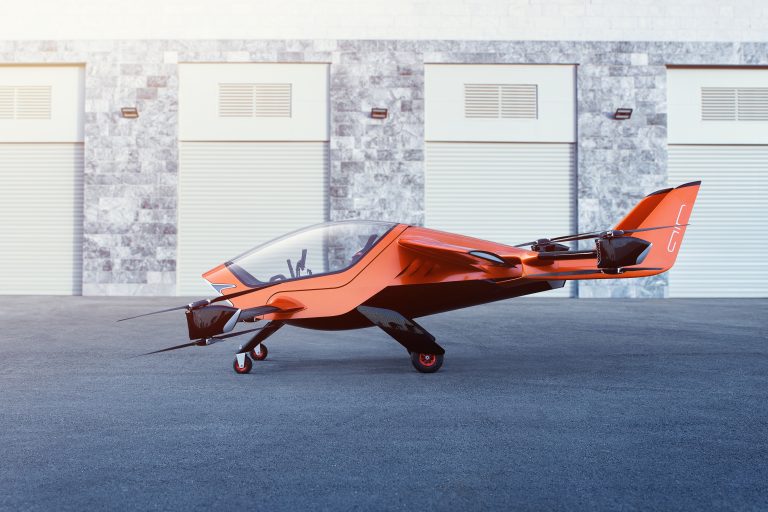
Fig. 3 – PC1: Tilt Propeller (Joby) | PC2: Vertical & Horizontal Propeller (Beta) | PC3: Tilt- & Vertikal Propeller (Archer) | PC4: Inclinded Vertical Propeller (Air EV)
(Mit freundlicher Genehmigung/Courtesy of (1) Joby Aviation. (c) [Media Kit] | (2) Beta Technologies Inc. [Media Kit] | (3) Archer Aviation Inc. [Media Kit] | (3) AIR VEV Ltd. [Media Kit])
There are 4 different propeller configurations (PC) for wing-based eVTOL. For all variants you will find examples in Fig. 3.
- PC1 – propellers are tiltable from vertical to horizontal orientation.
In vertical position propellers allow vertical takeoff, for forward flight propellers are folded to horizontal position. - PC2 – propellers have dedicated vertical or horizontal orientation.
Vertical propellers are activated for takeoff, horizontal propellers provide propulsion for cross-country flight. Often only one horizontal propeller is installed. - PC3 – Part of the propellers are tiltable, the remaining propellers are fixed in vertical position.
This variant is more or less a combination of 1 and 2. The vertical propellers only provide lift during takeoff, the folding propellers support vertical takeoff and provide propulsion during cross-country flight. Typically, the vertical propellers are mounted on the trailing edge of the wing and the folding propellers are mounted on the leading edge of the wing. - PC4 – All propellers have a vertical orientation with a slight angle (approximately 10 degrees) in the direction of flight.
The vertical propellers allow vertical takeoff, propulsion is made possible via different rotational speeds on the front and rear propellers.
Advantages of the PC1 variant (all propellers foldable) are a higher range and speed, because all propellers provide propulsion during the forward flight.
The disadvantage is a higher technological effort for the tilt mechanism as well as the fact that the transition, i.e. the transition from vertical climb to forward flight, is only possible via a ramp-like flight path.
Advantages of the PC2 variant (all propellers in dedicated position) are a simpler structure as there a no tilt propellers. Additionally, PC2-eVTOL can fly the transition in a 90-degree flight path. Disadvantage is that the vertical propellers are not used during forward flight, but cause additional weight and drag reduce.
Variant PC3 (combination PC1 and PC2) also allows the 90% ascent maneuver, which is an advantage over PC1. The number of tilt propellers is higher than the number of horizontal propellers in PC2, which allows higher speed than PC2. This is offset by the higher complexity for the tilt mechanism.
Variant PC4 (vertical propeller with forward inclination angle) is technologically the easiest and most cost-effective to implement. Similar to multicopters, there are no moving components except for the rotating propellers. The disadvantage is that the pitch angle varies over the transverse axis during takeoff and forward flight, which represents a loss of comfort during flight. This design is therefore only used for private aviation eVTOL.
The PC1 – PC3 variants are used for the larger, 4-6-seater aircraft developed for commercial aviation.
The PC4 variant is found exclusively on the smaller, 1-2 seat aircraft for private customers.
Regardless of the design type, all wing vertical takeoffs must be able to safely make the transition from vertical ascent to forward flight.
This flight maneuver is called transition maneuver or sometimes just transition. The safe mastery of this maneuver under even difficult weather conditions is of central importance for the certification of the eVTOL by the certification bodies.
The Transition Maneuver
The transition maneuver is the most important flight maneuver for all eVTOL. It is essential for a safe takeoff and landing.
It consists of 3 phases and includes (1) the vertical ascent, (2) the successive transition from vertical ascent to forward flight, and (3) the transition from ascent to forward flight.
During landing, the phases are passed through in reverse direction.
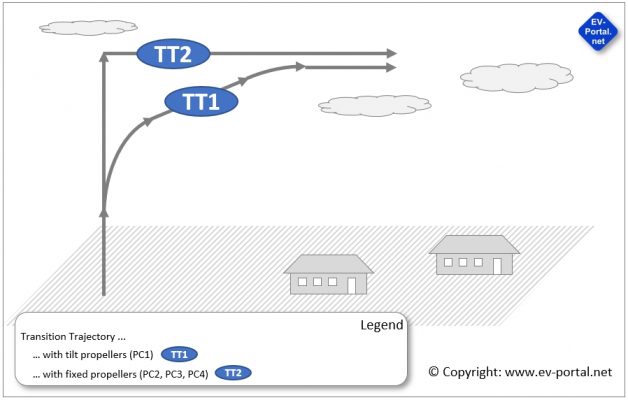
Fig. 4 – Transition Trajectories of wing-based eVTOL
In principle, the transition maneuver can be performed in 2 different transition trajectories (TT), which are shown in Fig. 4.
eVTOL with tilt propellers (PC1) can basically only perform the transition maneuver in transition trajectory TT1:
- At takeoff, all propellers are in vertical position so that the aircraft can climb vertically.
- Once a certain minimum altitude is reached, the propellers are slowly folded from the front. The aircraft now begins to move forward additionally, it now ascends at a certain angle to the earth’s surface.
Important: The forward folding of the propellers must not be done too fast, the airplane would crash! - With increasing speed, lift forces develop on the wings, so that the propellers can be folded further forward.
- When a certain minimum speed is reached at which the wings provide sufficient lift, the propellers are fully folded into the horizontal position.
In this video you can see the start maneuver with transition trajectories (TT1) from Joby Aviation.
Wing-based eVTOL with fixed vertical and horizontal propellers (PC2) can fly the transition maneuver additionally in trajectory TT2:
- During takeoff, only the vertical propellers rotate, allowing the aircraft to climb vertically.
- Once a certain minimum altitude is reached, the speed of the vertical propellers is reduced so that the aircraft stands in the air like a helicopter.
- Now the horizontal propellers are also started, so that the aircraft starts to move forward. As the speed increases, lift forces develop on the wings, so that the speed of the vertical propellers can be successively reduced.
- Important: The speed reduction on the vertical propellers must not be done too fast, otherwise the aircraft would stall.
- When a certain minimum speed is reached, the vertical propellers are switched off.
In this video you can see the start maneuver of Autoflight with transition trajectories (TT2).
Wing-based eVTOL the PC3 and PC4 propeller configuration can fly the transition maneuver in both trajectories TT1 and TT2.
Here you can see the video of the transition maneuver of the PC3-eVTOL from Archer Aviation.
PC4-eVTOL are in principle multicopters with wings, here the flight control is exclusively done by the speed of the propellers. As an example, here you can see the video of the ascent maneuver of the AIR One.
Whether the ability to fly the transition maneuver at a 90-degree angle (TT2) is a competitive advantage is difficult for us to judge. In a very urban environment with many high-rise buildings, this could be the case.
Wing-based eVTOL for Commercial Aviation - America
The USA, or rather the state of California in particular, is to a certain extent the hot spot for start-ups, and accordingly most companies for wing vertical take-offs were founded here.
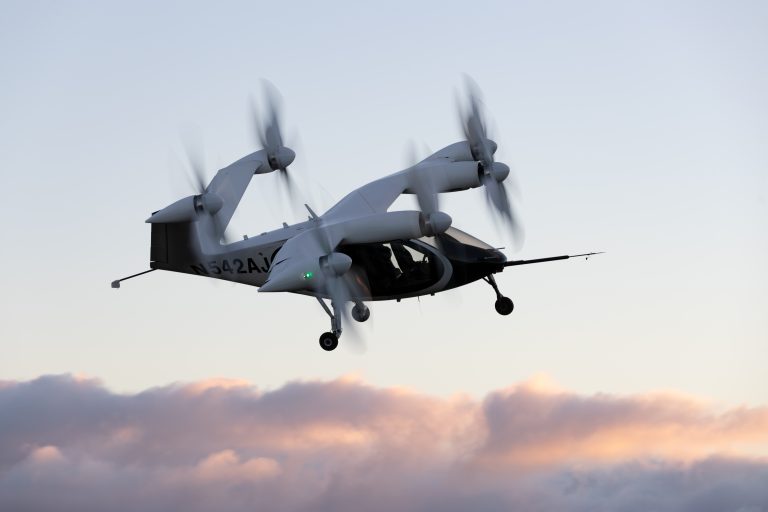
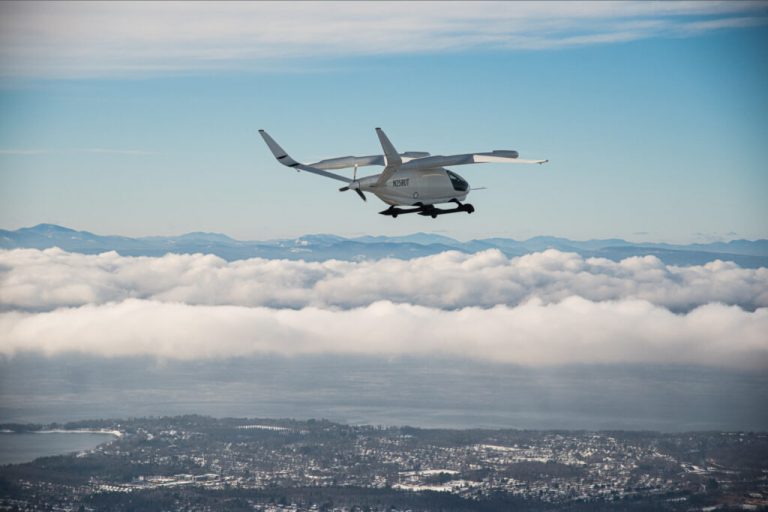
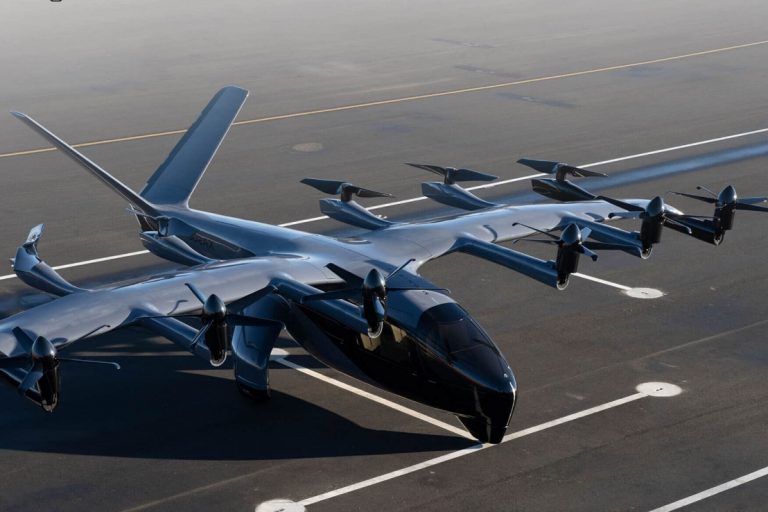
Fig. 5 – Joby Aviation | ALIA-250 from Beta Technologies | Midnight from Archer Aviation
(Mit freundlicher Genehmigung/Courtesy of (1) Joby Aviation. (c) [Media Kit] | (2) Beta Technologies Inc. [Media Kit] | (3) Archer Aviation Inc. [Media Kit])
The US companies Joby Aviation, Beta Technologies and Archer Aviation are already relatively far advanced in their development pipelines and are already working with flight-ready, near-production prototypes.
The 3 start-ups use different propeller configurations (PC1 at Joby, PC2 at Beta, PC3 at Archer), as can be seen in Fig. 5.
These start-ups are also setting standards in terms of commercialization. Joby and Archer have established partnerships with renowned U.S. airlines, the future buyers of your products.
- Joby is in contact with Delta Airlines, which has also taken a $60 million stake in Joby, with the option to increase that stake to $200 million.
- Archer has allied with American Airlines, which has signed a letter of intent to procure 200 Midnight aircraft.
- Beta Technologies advised customers include UPS, a package delivery company, and a pharmaceutical company (transporting critical drugs and donor organs).
This means that the 3 companies have a good chance of competing with the other start-ups.
However, no significant number of aircraft are expected to be sold until 2025 at the earliest. The companies will therefore have to reckon with high expenses and low earnings on the revenue side for at least another 2 years.
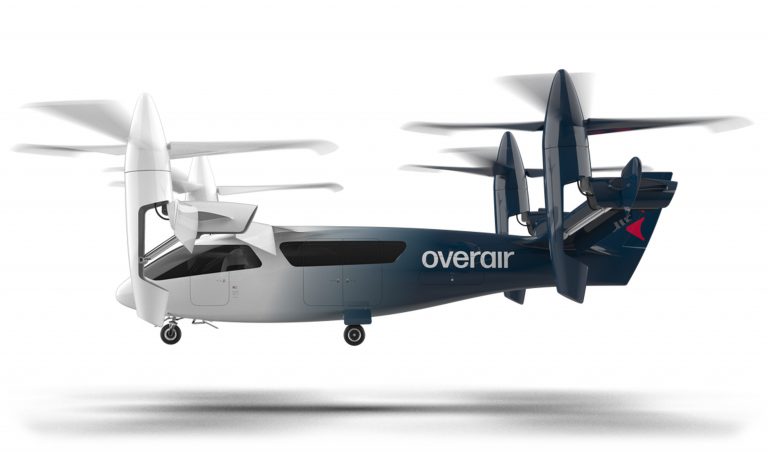
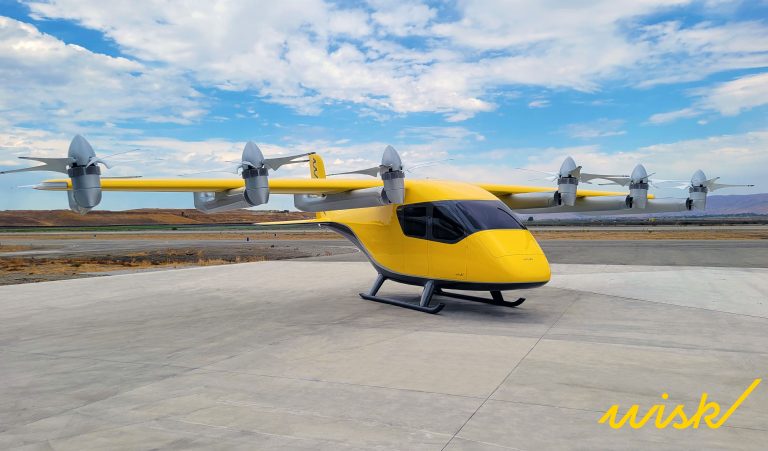
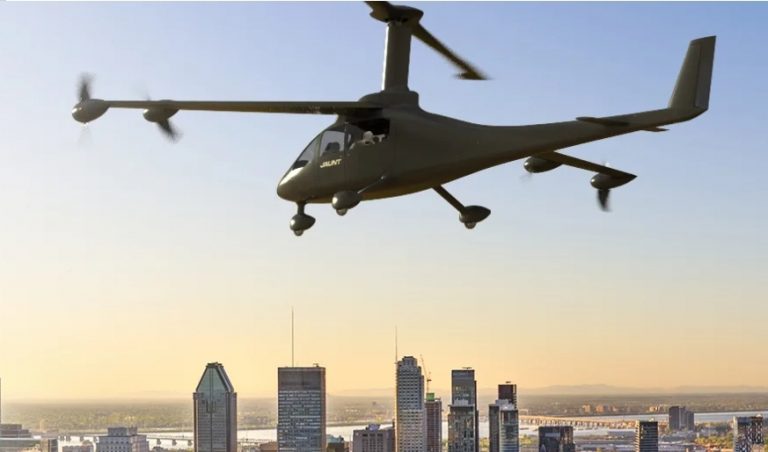
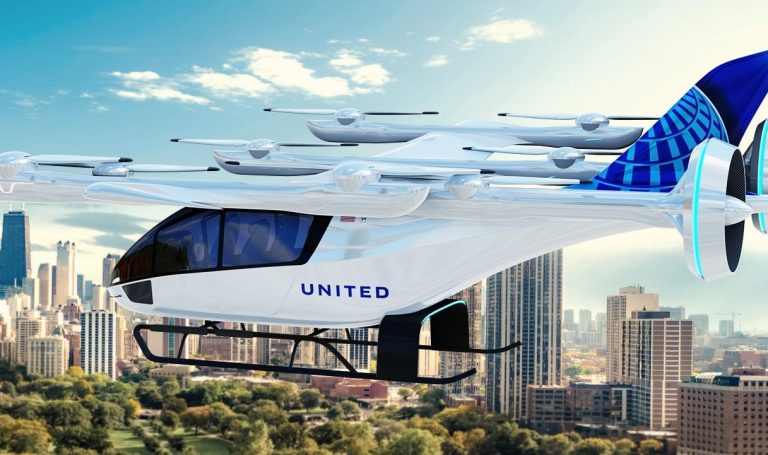
Fig. 6 – Butterfly from Overair | GEN6 from Wisk Aero | Jaunt eVTOL | EVEAir Mobility eVTOL
(Mit freundlicher Genehmigung/Courtesy of (1) Overair Inc. [Homepage] | (2) Wisk Aero LLC. [Media Kit] | (3) Jaunt Air Mobility LLC. [Homepage]) | (4) EVE Holding, Inc. [Homepage])
The U.S. companies Overair and Wisk Aero, the Canadian start-up Jaunt and the Brazilian company EVE Air Mobility are still in the concept phase and do not yet have flight-ready, near-production prototypes.
The technological approaches differ significantly, as you can see in Fig. 6.
With its Butterfly model, Overair relies on only 4 tilt propellers (propeller configuration PC1), which are unusually large at 6 m in diameter. This is intended to increase efficiency compared to models with many smaller propellers. The propeller system is not a new development but was developed in DoD (Department of Defense) and NASA technology programs.
Wisk Aero is a joint venture of Boeing and Kitty Hawk. With its combination of vertical and tilt propellers (propeller configuration PC3), the aircraft, called GEN6, is similar on Archer Aviation’s “Midnight” model.
With its large vertical rotor, the aircraft developed by Jaunt is reminiscent of a helicopter (propeller configuration PC2). Unlike a classic helicopter, the vertical rotor is only required for vertical takeoff and not for propulsive flight.
EVE Air Mobility was founded Brazilian aircraft manufacturer Embraer, the flight model outlined in various news relies on dedicated vertical and horizontal propellers similar to Beta Technologies (propeller configuration PC2).
We can only speculate about the economic success prospects of these 4 “latecomers”.
As a subsidiary of Embraer, an established aircraft manufacturer, EVE Air has potentially good prospects for the future, especially since, according to EVE, there are already a four-digit number of pre-orders for EVE’s aircraft.
There is definitely a market for electric vertical take-off aircraft in Brazil. Especially in the economic metropolis of Sao Paulo, which is plagued by chronic traffic congestion and is considered the city with the most inner-city helicopter flights. For most office buildings, rooftop helipads are standard.
Wisk Aero is also a subsidiary of an aircraft manufacturer. However, Boeing has been in a financial crisis since the crashes of the two 737 Maxs. Wisk’s 2nd joint venture partner, Kitty Hawk, ceased operations in September 2022, what this means for Wisk Aero in the overall situation remains to be seen.
In Overair’s favor is the fact that one of its founders, Abe Karem, has more than 50 years of experience in the aviation sector. A renowned investor has also been found in the form of the South Korean Hanwa Group, which has a $145 million stake in Overair.
In the meantime, Jaunt has been bought out by the U.S. aviation company AIRO Group, so that Jaunt’s financial situation is not currently a problem. To what extent the very special technology with a single rotor is advantageous remains to be seen.
Wing-based eVTOL for Commercial Aviation - Europe and Asia
Start-ups for wing-based eVTOL have also been founded in Europe and Asia.
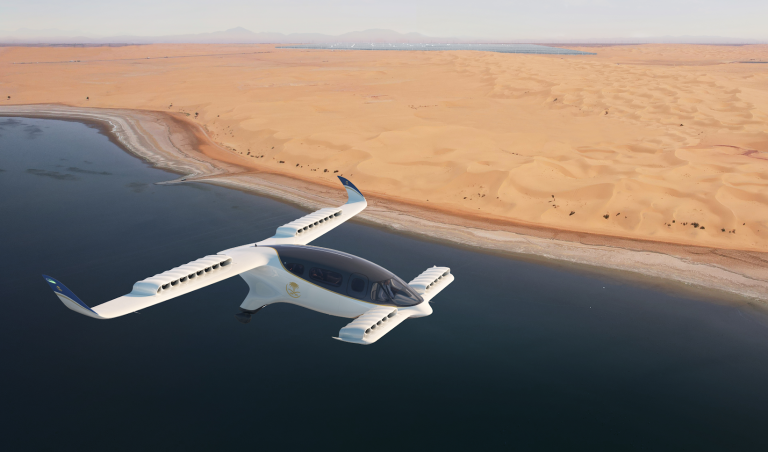
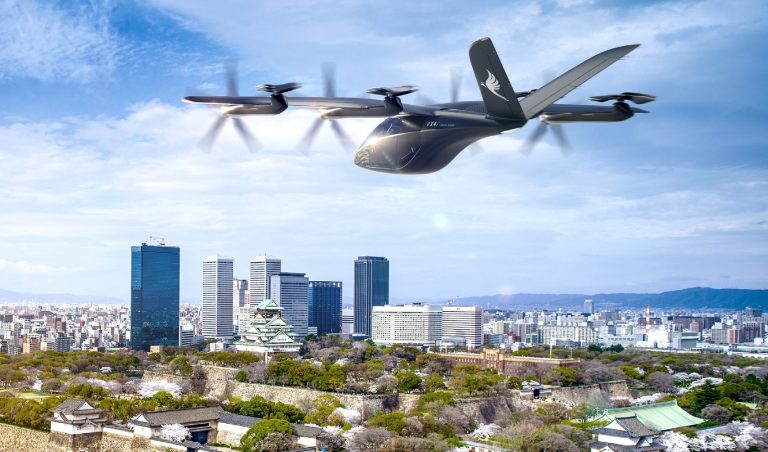
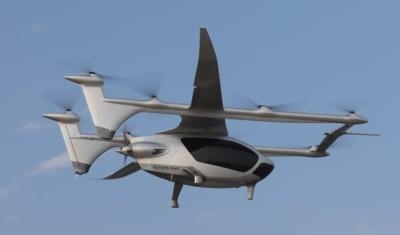
Abb. 7 – Lilium Jet | VX4 from Vertical Aerospace | “Prosperity I” from Autoflight
(Mit freundlicher Genehmigung/Courtesy of (1) Lilium GmbH [Media Kit] | (2) Vertical Aerospace Group Ltd. [Press Release] | (3) Autoflight Limited [Homepage]))
The German company Lilium, the Chinese start-up Autoflight and the British start-up Vertical Aerospace are already testing near-production prototypes, as you can see in Fig. 7.
The Munich-based company Lilium uses ducted tilt fans (propeller configuration PC1), which in principle are electric turbines (eTurbine). That is why the start-up calls its model “Lilium Jet”. Ducted fans avoids air turbulence at the propeller tips and thus friction losses and noise.
The Lilium Jet has already completed a large number of test flights including the critical transition maneuver, and with its 6 passenger seats it is one of the largest eVTOL aircraft in the world.
Vertical Aerospace is a British start-up; its near-series VX4 flight model combines tilt and vertical propellers similar to Archer Aviation (PC3 propeller configuration); series production is scheduled to start in 2025.
In August 2023, an accident occurred during an unmanned test flight. The aim was to test flight capability in the event of an engine failure.
The model from the Chinese company Autoflight has dedicated vertical and horizontal propellers (propeller configuration PC2).
Autoflight is aiming for worldwide distribution, and a German subsidiary has been established at Augsburg Airport for European flight certification, which is planned for 2025. Test flights in Germany with the near-production flight model “Prosperity I” are planned for 2023.
We can only speculate about the economic prospects of success for these 3 candidates, with none of the manufacturers expected to go into series production before 2025.
Lilium has been managed since August 2022 by a former Airbus manager who has a more intensive view of the cost situation. Lilium’s original business model envisioned a kind of ride-sharing service at cab prices.
In the meantime, it is planned to offer short-haul flights for business customers or solvent private individuals at significantly higher prices. The Lilium jet is also to be sold to airlines, and advance orders have already been placed. With a capacity of 6 passengers, the Lilium Jet has a clear competitive advantage.
Vertical Aerospace’s investors include airlines such as American Airlines and Virgin Airlines. Well-known aircraft suppliers have been contracted for component development, such as Rolls–Royce for the propulsion system and Honeywell for the flight control system. As early as 2021, more than 1000 pre-orders are expected to have been received.
Autoflight is relying on a global team that it says combines Chinese production techniques with German engineering and an American sales force, which sounds promising in principle.

Fig. 8 – Concept Vehicle from Supernal Aero
(Mit freundlicher Genehmigung/Courtesy of Supernal. [Media Kit])

Fig. 9 – eVTOL model from Pantuo Aviation
(Mit freundlicher Genehmigung/Courtesy of Pantuo Aviation [Homepage])
Korean company Supernal Aero and chinese start-up Pantuo Aviation are still in the early stages of development.
Supernal Aero is a subsidiary of the Korean car manufacturer Hyundai.
Only a few technical details of the model aircraft are known so far.On the homepage the so-called “Concept Vehicle” is shown as a graphic with a wing and a V-tail. On the wing there is one longitudinal beam per side, on which 1 folding propeller can be seen at the front and 2 vertical propellers at the rear (propeller configuration PC2). On the rear V-tail there is 1 more folding propeller on each side. Whether this “concept vehicle” already represents the final design remains to be seen.
At the Farnborough Airshow 2022 in Great Britain, Supernal exhibited a cabin model of the “Concept Vehicle”, apparently the passenger capacity will be 4 persons plus 1 pilot, flight operations are scheduled to start in 2028.
Pantuo Aviation is developing a flight model with many similarities to the Lilium Jet; in a press release dated Nov. 30, 2021, Pantuo is even explicitly described as the Chinese answer to Lilium. However, the latest news on Pantuo’s homepage is from 2021, in this respect it is unclear whether the company is still working on the eVTOL model.
The Pantuo flight model has a front, smaller wing in front of the cockpit (duck wing) and a rear, larger wing at the tail. There are a total of 22 electric turbines mounted on both wings, which are larger in diameter compared to Lilium. The wings are foldable from vertical to horizontal (propeller configuration PC2), also here Pantuo model differs from Lilium jet, where the wings themselves are fixed and only the electric turbines at the rear part of the wing are folded.
Wing-based eVTOL for Private Customers
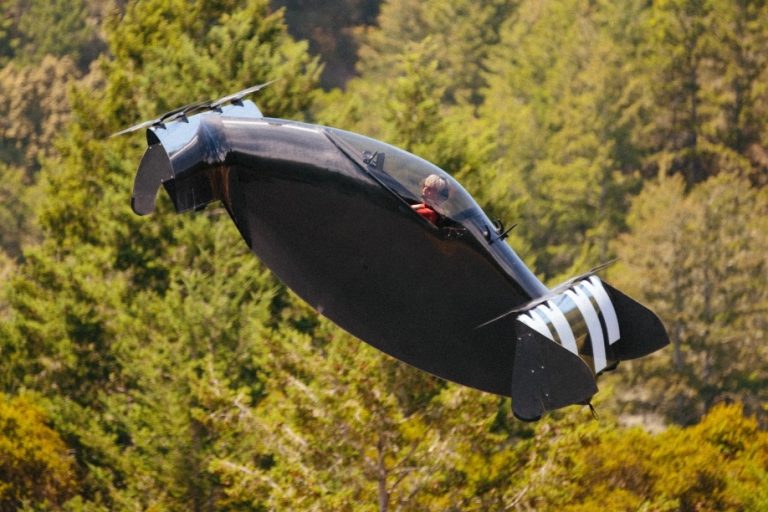
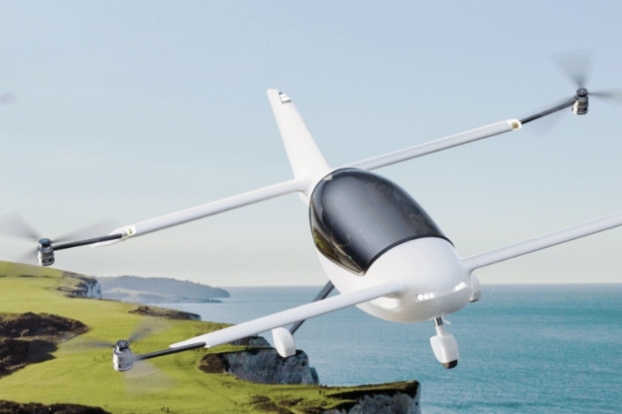
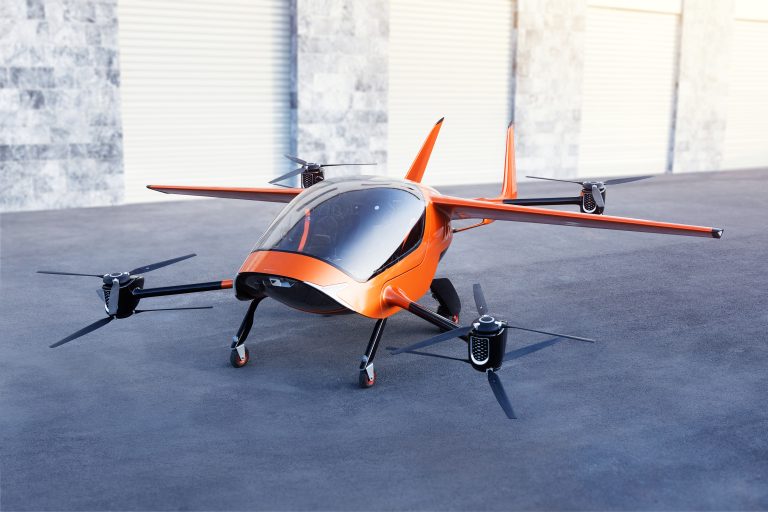
Fig. 10 – BlackFly from Opener | AXE from Skyfly | AIR ONE from AIR
(Mit freundlicher Genehmigung/Courtesy of (1) Opener, LCC [Homepage] | (2) Skyfly Technologies Ltd. [Homepage] | (3) AIR VEV Ltd. [Press Kit])
Start-ups Opener (USA), Skyfly Technologies (UK) and AIR (Israel) are developing aircraft for private customers and are already working on near-production prototypes.
The technological approaches are similar, as you can see in Fig. 10.
The flight models are comparatively small and each has a front and a rear wing, all models are equipped with vertical propellers at the front and rear which are slightly folded in the direction of flight (propeller configuration PC4).
Flight control in this design is solely by propeller speed control, i.e. there are no rudders, elevators or ailerons.
Opener’s single–seat model is called BlackFly, it has a of 20 miles (32 km), the top speed is 60 mph (100 km/h) and it is electronically limited to meet the ultra-light vehicle specification in the US.
This allows BlackFly to be flown in the U.S. without a pilot’s license or registration. The price as well as the date for the sales launch have not yet been determined, but interested customers can already sign up for a mailing list.
Skyfly is developing a two-seat aircraft called Axe with a top speed of 100 mph (160 km/h) and a range of 100 miles (160 km).
With these performance specs, Axe no longer falls under the Ultralight Vehicle Regulation in the U.S., meaning the aircraft can only be flown with a pilot’s license. Axe can already be ordered today, with a current base price of 150,000 pounds net. As of mid-January 2023, 23 aircraft have already been reserved, with delivery planned from 2024.
AIR is developing a two–seat aircraft called AIR ONE, with a range of 177 km (110 ml) and a top speed of 250 km/h (155 mph); with these performance figures, a pilot’s license is also required in the United States.
Sales are scheduled to begin in 2024, with target markets in the U.S., Europe, Australia and Israel. The entry price is currently $150,000, and 150 customers are said to have already made a down payment.
Flying Cars with the technology of wing-based eVTOL
The Californian US start-up ASKA Fly is working on an American dream from the 1950s, the flying car! The model was presented at the CES in Las Vegas in January 2023 and is called ASKATM A5 (Fig. 10).
- When driving on the road, ASKATM A5 – with wings folded – has the footprint of an American SUV, powered by 4 wheel hub motors.
- For flight the two wings can be unfolded, these are equipped with 2 pivoting and 4 fixed vertical propellers (propeller configuration PC2). Capacity is 4 people (3 passengers plus 1 pilot), range is 400 km (250 miles) with range extender at a top speed of 240 km/h (150 mph).
- Certification is expected by 2025, with series production starting in 2026.
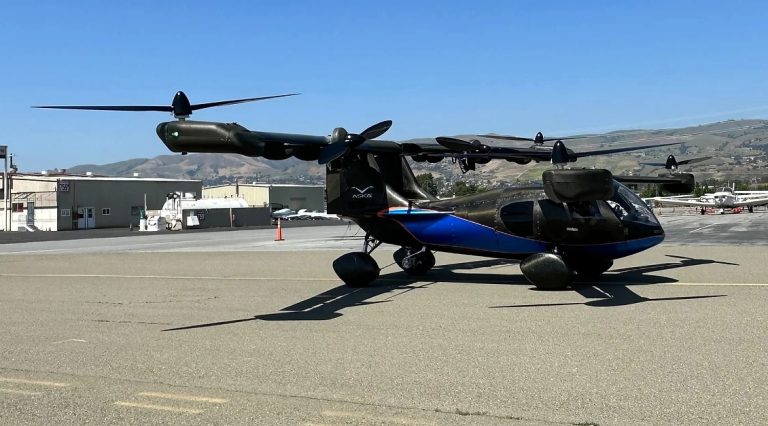
Fig. 11 – ASKA(TM) A5 on air field
(Mit freundlicher Genehmigung/Courtesy of ASKA/NTF Inc. Ltd. [Homepage])
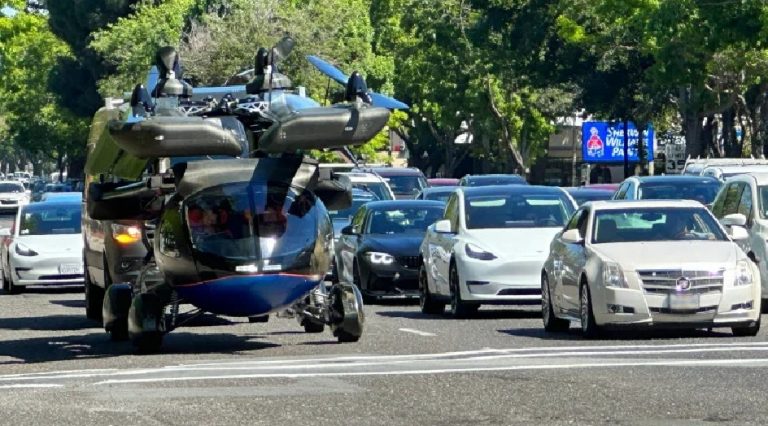
Fig. 12 – ASKA(TM) on the road
(Mit freundlicher Genehmigung/Courtesy of ASKA/NTF Inc. Ltd. [Homepage])
ASKA’s homepage features a fascinating animated video of one of the flight car’s missions. After a short inner-city drive around Silicon Valley, the A5 reaches a small parking lot. There, the wings are unfolded and the A5 takes off, continuing its journey in the air.
Whether this vision of ASKA – with all the open questions regarding certification and safety – can become reality in the next few years is something we in the editorial department cannot answer either.
In any case, ASKA is an example of the unbroken optimism of Silicon Valley!
